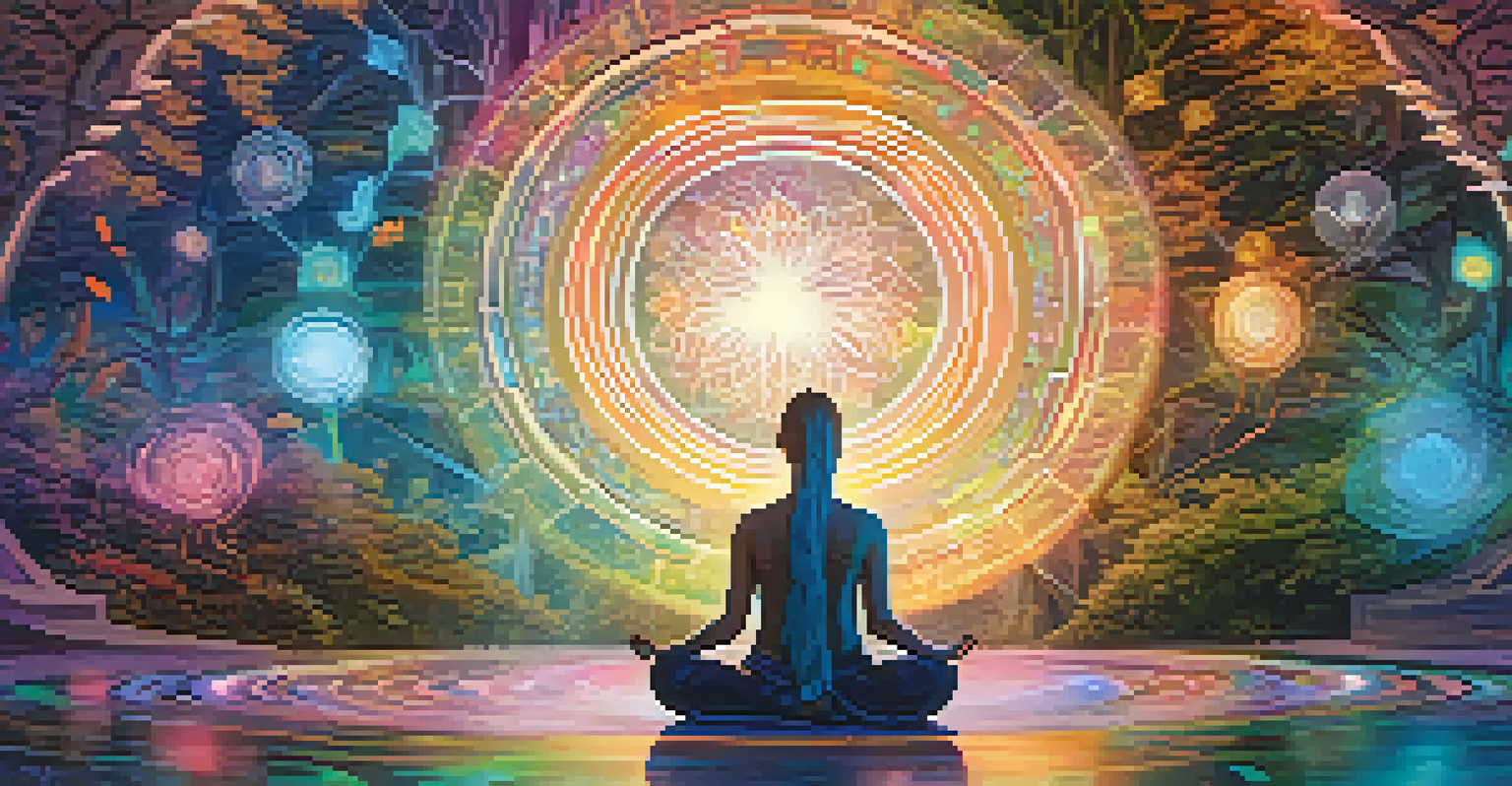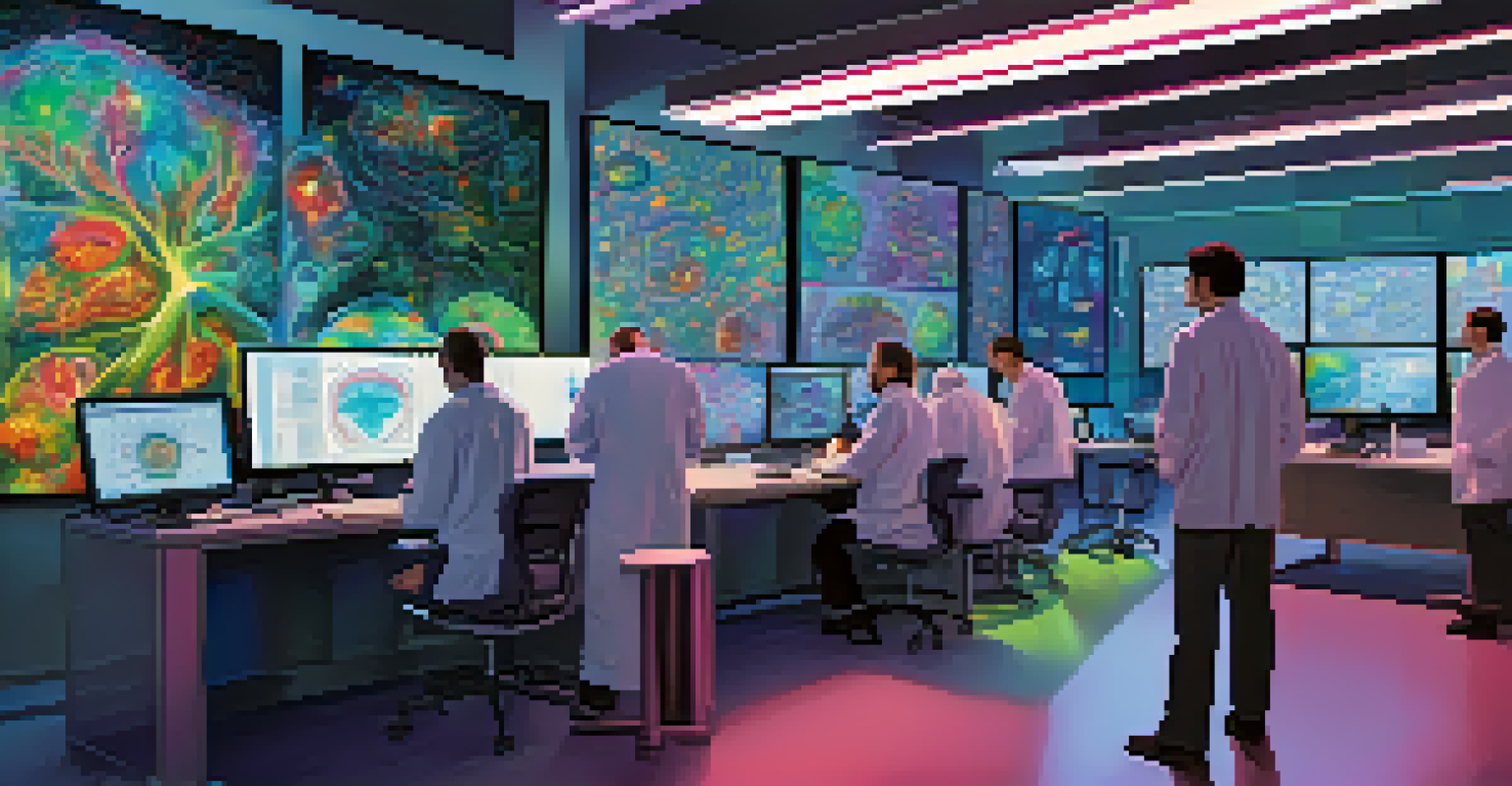Historical Perspectives on Hallucinogens and Mind States

Ancient Cultures and the Use of Hallucinogens
Throughout history, various ancient cultures have utilized hallucinogens in their rituals and healing practices. From the sacred mushrooms of the Aztecs to the peyote cactus used by Native Americans, these substances were often seen as bridges to the divine. They played significant roles in religious ceremonies, allowing participants to connect with their spiritual beliefs and gain insights into their lives.
The use of psychedelics can help us understand the mind and the nature of consciousness better than any other method we have available.
These early uses highlight a deep understanding of altered states of consciousness. By harnessing the power of hallucinogens, these cultures aimed to explore the mind's potential and its relationship with the universe. This connection between spirituality and psychoactive substances demonstrates how integral these experiences were to their societal structures.
Moreover, the rituals surrounding hallucinogen use were often accompanied by music, dance, and communal gatherings. This not only enhanced the experience but also fostered a sense of community among participants. Together, they traversed the realms of consciousness, creating a shared understanding of the mind's mysteries.
Hallucinogens in Eastern Philosophies
Eastern traditions, particularly within Hinduism and Buddhism, have long acknowledged the importance of altered states of consciousness. Practices such as yoga and meditation have been used to achieve insights comparable to those induced by hallucinogens. For example, the use of soma, a ritual drink mentioned in ancient texts, is thought to have had hallucinogenic properties that facilitated spiritual experiences.

These traditions emphasize the journey inward, seeking enlightenment through disciplined practices. While not all Eastern philosophies advocate for the use of substances, many recognize that altered states can lead to profound realizations about existence and consciousness. This perspective encourages exploration and understanding of the mind's capabilities.
Ancient Cultures Valued Hallucinogens
Various ancient cultures viewed hallucinogens as sacred tools for spiritual exploration and healing.
Furthermore, the interplay between mind states and spiritual awakening is a recurring theme in these philosophies. By embracing the idea that altered consciousness can reveal deeper truths, practitioners cultivate a holistic approach to mental and spiritual well-being. This opens the door for a more profound appreciation of the mind's potential.
The Psychedelic Movement of the 20th Century
The mid-20th century marked a significant resurgence of interest in hallucinogens, particularly with the rise of the psychedelic movement. Figures like Timothy Leary and Aldous Huxley championed the use of substances like LSD and psilocybin to explore consciousness and challenge societal norms. This period was characterized by a quest for deeper understanding and personal liberation, fueled by the belief that hallucinogens could expand the mind.
Psychedelics are not a panacea, but they can be a powerful catalyst for change and growth in our lives.
Experiments conducted by researchers, including those at Harvard, sought to understand the potential therapeutic benefits of psychedelics. These studies revealed promising results for treating various mental health issues, sparking debates about the role of these substances in modern medicine. The movement also intersected with countercultural movements, promoting ideas of peace, love, and expanded consciousness.
However, the backlash against the psychedelic movement led to stigmatization and stringent regulations. Despite this, the legacy of this era continues to influence contemporary discussions on mental health and spirituality. Today, interest in psychedelics is resurging, with researchers exploring their potential in therapeutic settings once again.
Modern Research and Therapeutic Uses of Hallucinogens
Recent years have witnessed a renaissance in scientific research surrounding hallucinogens, particularly in their therapeutic applications. Studies have shown that substances like psilocybin and MDMA can help alleviate symptoms of depression, PTSD, and anxiety. This renewed interest underscores the importance of understanding how these substances interact with the brain and contribute to healing.
Researchers are now focusing on the mechanisms by which hallucinogens affect brain connectivity and emotional regulation. These studies have revealed that altered states of consciousness can lead to new perspectives and insights, fostering psychological breakthroughs. As a result, clinical trials are paving the way for potential treatments that could revolutionize mental health care.
Psychedelics Are Resurfacing in Research
Recent studies highlight the therapeutic potential of hallucinogens for treating mental health issues like depression and PTSD.
Moreover, the growing acceptance of psychedelic therapy is encouraging open discussions about the responsible use of these substances. As we learn more about their effects, there is hope for integrating hallucinogens into mainstream therapeutic practices. This shift represents a significant change in how society views mind-altering substances and their potential benefits.
Cultural Perspectives: Stigma and Acceptance
Cultural attitudes towards hallucinogens have varied widely throughout history, with periods of both acceptance and stigma. In many indigenous cultures, these substances are revered and respected, viewed as sacred tools for spiritual exploration. Conversely, in Western societies, the narrative has often been shaped by fear and misunderstanding, leading to criminalization and social stigma.
This dichotomy has significant implications for how hallucinogens are perceived and utilized. While some communities continue to use them in traditional contexts, others face legal and societal barriers that hinder exploration and understanding. Bridging this gap requires a shift in cultural narratives, emphasizing education and open dialogue about the benefits and risks associated with hallucinogen use.
As conversations around mental health and well-being evolve, there is an opportunity to reshape perceptions of hallucinogens. By recognizing their historical significance and potential therapeutic benefits, society can foster a more nuanced understanding. This shift could lead to greater acceptance and integration of hallucinogens into contemporary practices.
The Intersection of Technology and Hallucinogens
In our increasingly digital age, technology is playing a fascinating role in the exploration of hallucinogens. Virtual reality (VR) and augmented reality (AR) are being used to create immersive experiences that mimic altered states of consciousness. These technologies allow users to engage with their minds in innovative ways, broadening the understanding of perception and reality.
Researchers are also leveraging technology to study the effects of hallucinogens more closely. Advanced neuroimaging techniques provide insights into how these substances interact with brain activity, revealing the underlying mechanisms of altered states. This scientific approach aims to demystify the experience and identify potential benefits in various therapeutic contexts.
Technology Enhances Hallucinogen Study
Innovations in virtual and augmented reality are creating new ways to explore altered states of consciousness.
Furthermore, the rise of online communities and platforms dedicated to discussing psychedelics has fostered a sense of connection among users. These spaces encourage sharing experiences, research findings, and personal insights, promoting a collective exploration of consciousness. As technology continues to evolve, its role in shaping the narrative around hallucinogens will likely expand.
Future Directions: Hallucinogens and Human Consciousness
As we look to the future, the exploration of hallucinogens and their impact on human consciousness is poised for significant growth. Researchers are increasingly interested in understanding how these substances can contribute to human potential, creativity, and mental well-being. This evolving landscape may lead to breakthroughs in both science and spirituality, enhancing our comprehension of consciousness itself.
The integration of hallucinogens into therapeutic practices raises important questions about ethics, safety, and accessibility. Ensuring responsible use and informed consent will be crucial as society navigates this complex terrain. Future research will need to address these concerns while exploring the full potential of hallucinogens in promoting mental health.

In conclusion, the historical and ongoing dialogue about hallucinogens invites us to reconsider our perspectives on mind states and consciousness. By learning from the past and embracing innovative research, we can create a more informed and compassionate approach to exploring the depths of the human mind. The journey into consciousness is just beginning, and hallucinogens may be key to unlocking new dimensions of understanding.